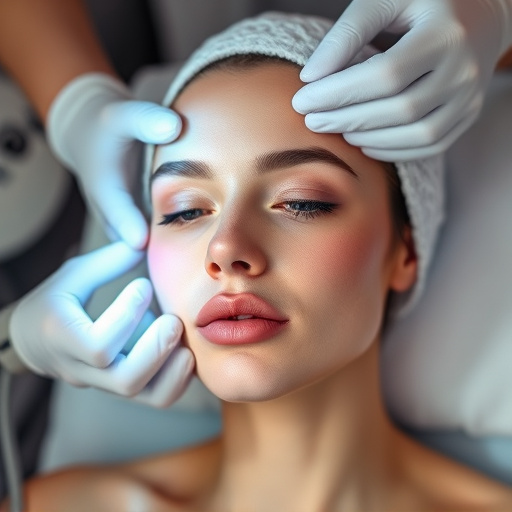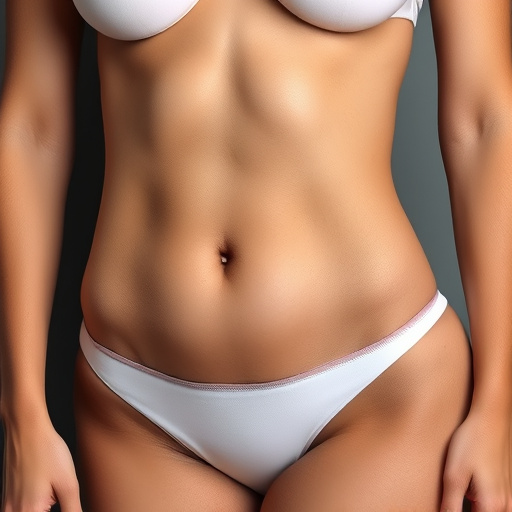Cellulite Reduction Treatment: Hydrating, Nourishing Solutions for Smooth Skin
Cellulite, caused by changes in connective tissue and fat distribution, is influenced by genetics, h…….
Cellulite reduction treatment has emerged as a significant focus in the aesthetics industry, capturing the attention of individuals seeking to achieve smoother, more contoured skin. This comprehensive guide delves into the world of cellulite reduction, exploring various treatments, their mechanisms, global impact, and future prospects. By the end of this article, readers will have a thorough understanding of the current landscape, challenges, and exciting possibilities in this rapidly evolving field.
Cellulite reduction treatment refers to a range of aesthetic procedures and therapies designed to minimize the appearance of cellulite, a common skin condition characterized by uneven, dimpled skin, often appearing on the thighs, buttocks, and abdomen. This treatment aims to reduce the visibility of the connective tissue bundles that cause these dimples, achieving smoother, more aesthetically pleasing skin.
The core components of cellulite reduction treatment include:
Lymatic Drainage: Stimulating the lymphatic system to improve circulation and waste removal, which can aid in reducing cellulite. Techniques like manual lymphatic drainage massage are employed.
Targeted Skin Tightening: Using technologies like radiofrequency (RF) or laser treatments to heat and contract collagen fibers, leading to skin tightening and improved texture.
Fat Reduction: Selectively targeting and reducing fat cells in problem areas can contribute to a smoother appearance. Non-invasive techniques such as high-intensity focused ultrasound (HIFU) or mesotherapy are commonly used.
Skin Resurfacing: Peeling or microdermabrasion procedures can improve skin texture and enhance the overall appearance, complementing cellulite reduction efforts.
The concept of cellulite reduction has evolved over centuries, with ancient civilizations employing various natural remedies for skin conditioning. Modern approaches gained traction in the late 20th century with advancements in dermatology and aesthetics. Early methods focused on manual massage and dietary changes, while recent years have witnessed a surge in technological innovations, offering more precise and effective treatments.
Cellulite reduction treatment has garnered global attention, with significant interest from both consumers and the medical community worldwide. The market is highly dynamic, with regions like North America, Europe, and Asia-Pacific leading in terms of both procedure volumes and technological advancements.
| Region | Market Size (2022) | Growth Rate (2023-2025) |
|---|---|---|
| North America | $7.5 billion | 8.2% |
| Europe | $6.2 billion | 7.5% |
| Asia-Pacific | $4.8 billion | 9.1% |
Regional variations in cellulite reduction trends reflect cultural norms, lifestyle preferences, and availability of technology:
North America: Known for its advanced aesthetic technologies, such as laser treatments and RF devices, with a focus on non-invasive procedures.
Europe: Embracing a holistic approach, combining massage techniques, dietary advice, and targeted therapies, often emphasizing natural solutions.
Asia-Pacific: Rapidly growing market with a significant demand for both traditional and modern treatments, driven by increasing disposable incomes and a rise in beauty influencers.
The cellulite reduction treatment market is characterized by:
Diverse Offerings: A wide range of procedures and technologies cater to different preferences, budgets, and desired outcomes.
Growing Demand: Increasing awareness and changing lifestyle trends have led to a surge in demand, particularly among younger demographics.
Investment in cellulite reduction treatment is driven by:
Clinical Research: Ongoing research and development fuel innovation, with new technologies and techniques emerging regularly.
Aesthetics Clinics: Dedicated aesthetics clinics and spas are investing in advanced equipment to attract a wider range of clients.
Telemedicine: The rise of telemedicine has expanded access to treatment options, allowing remote consultations and follow-ups.
Recent technological advancements have revolutionized cellulite reduction:
High-Intensity Focused Ultrasound (HIFU): Non-invasive HIFU devices can target deep connective tissue without incisions, leading to significant fat and collagen reduction.
Laser Therapy: Advanced laser treatments, such as diode or Nd:YAG lasers, offer precise targeting of adipose tissue, promoting fat cell destruction and skin tightening.
Radiofrequency (RF) Devices: RF technology heats the skin, stimulating collagen production and improving skin elasticity, contributing to long-term results.
Technological innovations have significantly improved treatment outcomes:
Precision: Modern devices offer more precise targeting, minimizing side effects and ensuring better patient satisfaction.
Customizability: Treatments can now be tailored to individual needs, considering skin type, body composition, and desired results.
Non-Invasiveness: Many new technologies provide non-invasive options, reducing recovery time and discomfort compared to surgical procedures.
Key policies and regulations governing cellulite reduction treatment vary across regions but generally include:
Licensing and Certification: Professionals performing these treatments must be licensed and certified by relevant medical bodies, ensuring they meet specific training and competency standards.
Product Approval: All devices and products used in cellulite reduction procedures must obtain regulatory approval, ensuring safety and efficacy.
Informed Consent: Patients are required to provide informed consent, understanding the risks, benefits, and expected outcomes of the treatment.
Regulatory frameworks play a crucial role in shaping the industry:
Safety Assurance: Stricter regulations ensure patient safety, encouraging responsible practices and continuous improvement in treatment technologies.
Market Transparency: Clear guidelines promote transparency, allowing consumers to make informed choices and fostering trust in the market.
Research Promotion: Regulatory requirements often drive clinical research, leading to advancements in technology and treatment protocols.
Despite its popularity, cellulite reduction treatment faces several challenges:
Lack of Uniformity in Results: Treatment outcomes can vary significantly due to individual factors like skin elasticity, body composition, and adherence to post-treatment instructions.
Potential Side Effects: Some procedures may cause temporary redness, swelling, or discomfort, with more invasive options carrying higher risks.
High Costs: Advanced technologies and treatments can be expensive, limiting accessibility for some individuals.
To address these challenges:
Personalized Treatments: Customizing treatment plans based on individual needs and preferences can improve satisfaction rates.
Comprehensive Education: Patients should receive detailed information about expected outcomes, potential side effects, and post-treatment care to manage expectations.
Incentivizing Responsible Practices: Regulators can encourage ethical practices by rewarding providers who offer transparent pricing and comprehensive patient education.
The following case studies illustrate successful cellulite reduction treatments:
Case Study 1: Non-Surgical Fat Reduction with HIFU: A 35-year-old female sought treatment for persistent cellulite on her thighs. Using a HIFU device, the clinic successfully reduced fat cells and improved skin texture, achieving a smoother appearance without surgery.
Case Study 2: Comprehensive Cellulite Management: A 40-year-old patient with severe cellulite on her buttocks and upper thighs underwent a multi-modal approach. This included lymphatic drainage massage, RF treatment for skin tightening, and dietary counseling to improve overall health. The combination strategy led to significant improvements in skin appearance and texture.
Case Study 3: Laser-Assisted Cellulite Reduction: A 28-year-old individual with mild cellulite desired a non-invasive solution. A series of laser treatments targeted adipose tissue, resulting in reduced visibility of cellulite and improved skin tone.
The future of cellulite reduction treatment holds exciting possibilities:
Personalized Medicine: Advancements in genomics and biotechnology may enable tailored treatments based on an individual’s genetic makeup.
Virtual Care: Telemedicine and virtual consultations could expand access to cellulite reduction services, particularly in underserved areas.
Integration of AI: Artificial intelligence can enhance treatment planning by analyzing patient data and predicting outcomes, improving overall efficiency.
Keep an eye out for these emerging trends:
Micro-Invasive Techniques: Ultra-fine needles and targeted delivery systems offer more precise treatments with reduced side effects.
Natural Supplements: Research into natural compounds may yield effective alternatives to conventional treatments, catering to those seeking holistic solutions.
Digital Solutions: Mobile apps and wearables could monitor treatment progress, provide real-time feedback, and enhance patient engagement.
Cellulite reduction treatment has evolved into a dynamic and diverse field, offering hope and solutions for millions worldwide. With technological advancements, personalized approaches, and growing consumer awareness, the future looks promising. As the industry continues to evolve, addressing challenges and embracing innovation will be crucial to meeting the needs of a global clientele. By staying informed and adopting evidence-based practices, professionals in this field can deliver exceptional results, empowering individuals to embrace their confidence with newfound smoothness and radiance.
Q: Is cellulite reduction treatment painful?
A: Discomfort levels vary by procedure. Many treatments are well-tolerated, while others may cause temporary redness or swelling. Modern technologies aim to minimize pain, and post-treatment care can alleviate any discomfort.
Q: How long do the results of cellulite reduction treatments last?
A: Results depend on the chosen treatment and individual factors. Non-invasive procedures like laser or RF treatments typically offer lasting improvements, while surgical options may require touch-ups over time.
Q: Can cellulite reduction help with weight loss?
A: Cellulite reduction treatments do not directly contribute to weight loss. They target specific areas for improvement in skin appearance and texture. For overall weight management, a balanced diet and regular exercise are essential.
Q: Is it safe to get cellulite reduction treatment during pregnancy?
A: Pregnant women should consult their healthcare provider before undergoing any cosmetic procedure. Some treatments may not be recommended during pregnancy due to potential risks to the developing fetus.
Q: How much does cellulite reduction treatment cost?
A: Costs vary widely based on location, technology used, and extent of treatment. Non-invasive options are generally more affordable than surgical procedures, with prices ranging from a few hundred to several thousand dollars per session.

Cellulite, caused by changes in connective tissue and fat distribution, is influenced by genetics, h…….

Cellulite, caused by factors like poor circulation, hormonal changes, and lifestyle choices, results…….